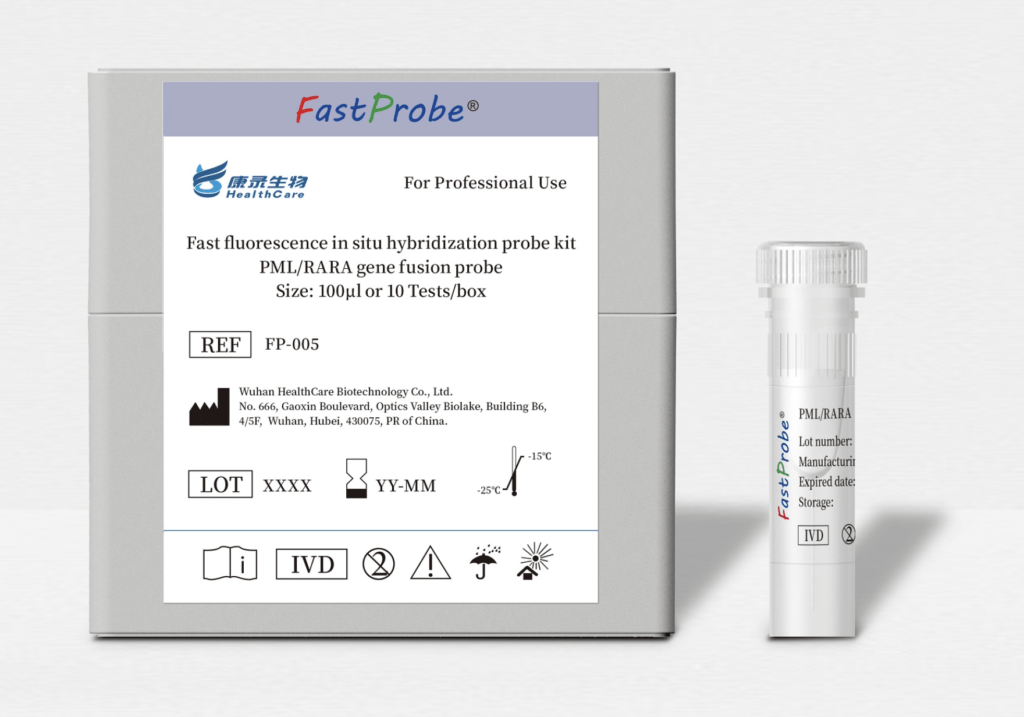
Acute promyelocytic leukemia (APL) is a specific subtype of acute myeloid leukemia. In cytogenetics and molecular biology, APL has a characteristic t(15;17)(q22;21) translocation, forming a PML-RARA fusion gene. A large number of data indicate that patients carrying the PML-RARA fusion gene are predictive of sensitivity to ATRA therapy and good clinical efficacy.
The two probes bind to the target detection site by in situ hybridization using an orange-red fluorescein-labeled PML probe and a green fluorescein-labeled RARA probe. Under normal conditions (the PML/RARA gene is not fused), it shows two orange-red signals and two green signals under a fluorescence microscope. When a fusion gene is present, the green and orange-red signals form a yellow fusion signal due to recombination.

PML/RARA gene fusion is a hallmark of acute promyelocytic leukemia (APL). PML/RARA protein fusion inhibits the differentiation and maturation of promyelocytic cells by dominant negative inhibition, thereby blocking cell differentiation leading to sustained proliferation. All-trans retinoic acid (ATRA) and arsenic trioxide can target the degradation of PML/RARA fusion protein, restore the function of wild-type PML and RARA genes, relieve their inhibition of gene transcription, induce cell differentiation and apoptosis, and effectively treat APL. The combination of ATRA and chemotherapy can achieve a complete response rate of 90% to 95% of APL, and can achieve long-term survival of more than 70% of patients.

Product size: 100μL FISH probe ( ⬤ | ⬤ ) + Pretreatment reagent (10 tests) + Antifade staining solution DAPI (10 tests).